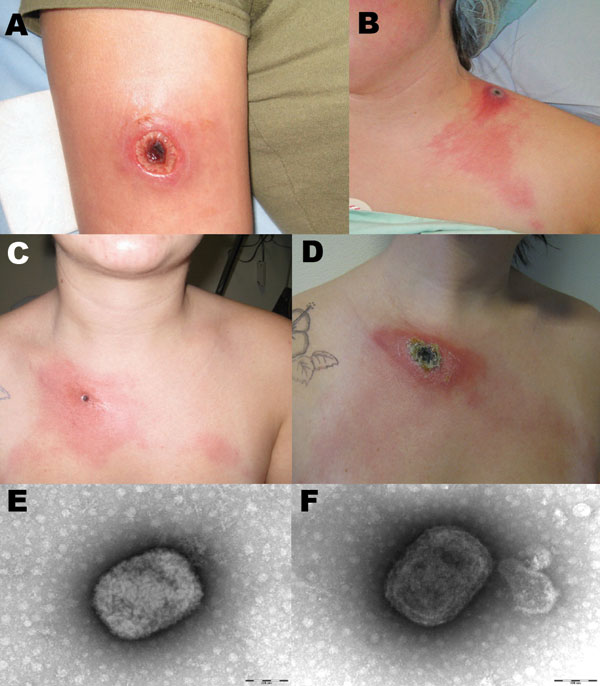Volume 15, Number 5—May 2009
Dispatch
Cowpox Virus Transmission from Pet Rats to Humans, France
Figure 1

Figure 1. Cowpox virus infection in 3 persons in northern France caused by transmission from infected pet rats. Cutaneous lesions caused by cowpox virus are shown in patient 1 (A), patient 3 (B) and patient 4 (C, D). The 2 latter patients had lymphangitis associated with the local lesion. Panel C was obtained on January 30, 2009, panel D on February 6, 2009. Negative-staining electron microscopy showed mulberry forms with conspicuous but short, randomly arranged surface tubules (E) and capsule forms with deeper stain penetration (F), both highly suggestive of poxvirus. Scale bar for panels E and F = 100 nm.
Page created: December 16, 2010
Page updated: December 16, 2010
Page reviewed: December 16, 2010
The conclusions, findings, and opinions expressed by authors contributing to this journal do not necessarily reflect the official position of the U.S. Department of Health and Human Services, the Public Health Service, the Centers for Disease Control and Prevention, or the authors' affiliated institutions. Use of trade names is for identification only and does not imply endorsement by any of the groups named above.